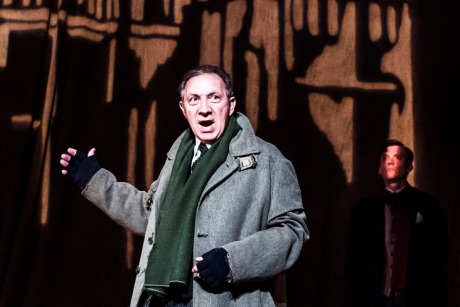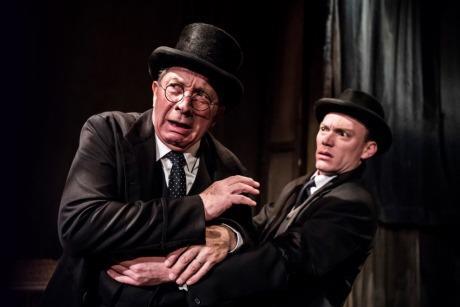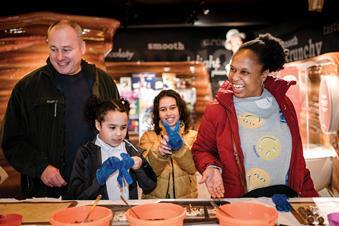It’s not very often I have to convince a plus one to tag along with me to the theatre to review a theatre production. As you can imagine there are quite a few who jump at the chance to experience the incredible shows we have on offer.
But it seems the stories, and various accolades, not least being “the most terrifying live theatre experience in the world”, have played their part in the perception, and perhaps reality, of The Woman in Black. After some mild persuasion however, we made it to the intimate Fortune Theatre, the ideal setting for an evening of supernatural activity.
Brilliantly adapted by the late Stephen Mallatratt, The Woman in Black tells the story of the sheltered solicitor Arthur Kipps who is sent to the remote town of Crythin Gifford to attend the funeral of a client, Alice Drablow. However, not all is as it seems and Mr Kipps soon realises that there’s much more to Mrs Drablow’s story than he first thought.

Pictured: Mark Hawkins plays ‘The Actor’ in The Woman in Black. Photo credit: Tristram Kenton.
There’s lightness. Plenty of darkness. And yes, you guessed it, a woman in black, with a wasted face, who is first seen by Mr Kipps in the church, and to the audience’s horror, in the aisle of the theatre.
With the simplest of effects, you feel the most powerful fright and terror at what unfolds before you. But the strength of it is that most of what unfolds doesn’t do so before your eyes, or on the stage, but in your imagination. Whether it’s the recreation of the pony and trap, helped wonderfully by the recorded sound and an old wooden box, or the invisible dog called Spider, sent to accompany Mr Kipps.
From the very outset you’re forced to conjure up imagery and are transported to the heart of the ghost story, and what a story it is.
The plot remains largely faithful to Susan Hill’s original best-selling novel, but there’s the extra dimension of it being a play within a play, and a great twist at the end (don’t worry, I won’t spoil the surprise).
Opening with an empty Victorian Theatre, the audience is introduced to an old Arthur Kipps (Richard Hope), who is reading a manuscript of his story. A young actor (Mark Hawkins), has been hired to help tell his dramatic and chilling story – and they set about rehearsing the play. Considering they’ve only recently joined the play, the chemistry between the two on stage is extremely convincing. They fall out, they make up, they laugh, they cry, and throughout it all, they have the ability to immerse you in a gripping production.

Pictured: Richard Hope has some great performances in The Woman in Black. Photo credit: Tristram Kenton.
Richard Hope is able to switch between characters, with hardly any effort, whether it’s Mr Bentley, Mr Jerome or ‘affected’ villager Keckwick, and just as The Actor jokes, his theatrical performance comes on in leaps and bounds.
The lack of props in the play doesn’t hinder the actors, nor does it take away from the ability to tell the story. In fact, the minimalism of the set and performance adds to its power, from the lone rocking chair to the haunting child’s music playing in the nursery.
It didn’t take us long to coil in our seats, gasp in genuine fright and cling on to the person next to us; the first sighting of the woman in black isn’t something you can prepare for, no matter how familiar you are with the plot or what’s to come. But the magic of live theatre is, and especially with The Woman in Black, that you can’t hide behind the sofa or cover your face with a blanket. You’re there, you’re immersed, and you’re part of the experience.
And as we left the theatre after a few hours of gripping drama, I realised that the shivers and goose bumps weren’t down to the air con and the image of the woman’s face may take longer to leave my memory than I thought.
Group organisers can call 020 7206 1174 or email enquiries@groupline.com for details on group bookings.
For more information, visit www.thewomaninblack.com
Main image: Richard Hope as Arthur Kipps and Mark Hawkins as The Actor. Photo credit: Tristram Kenton.















